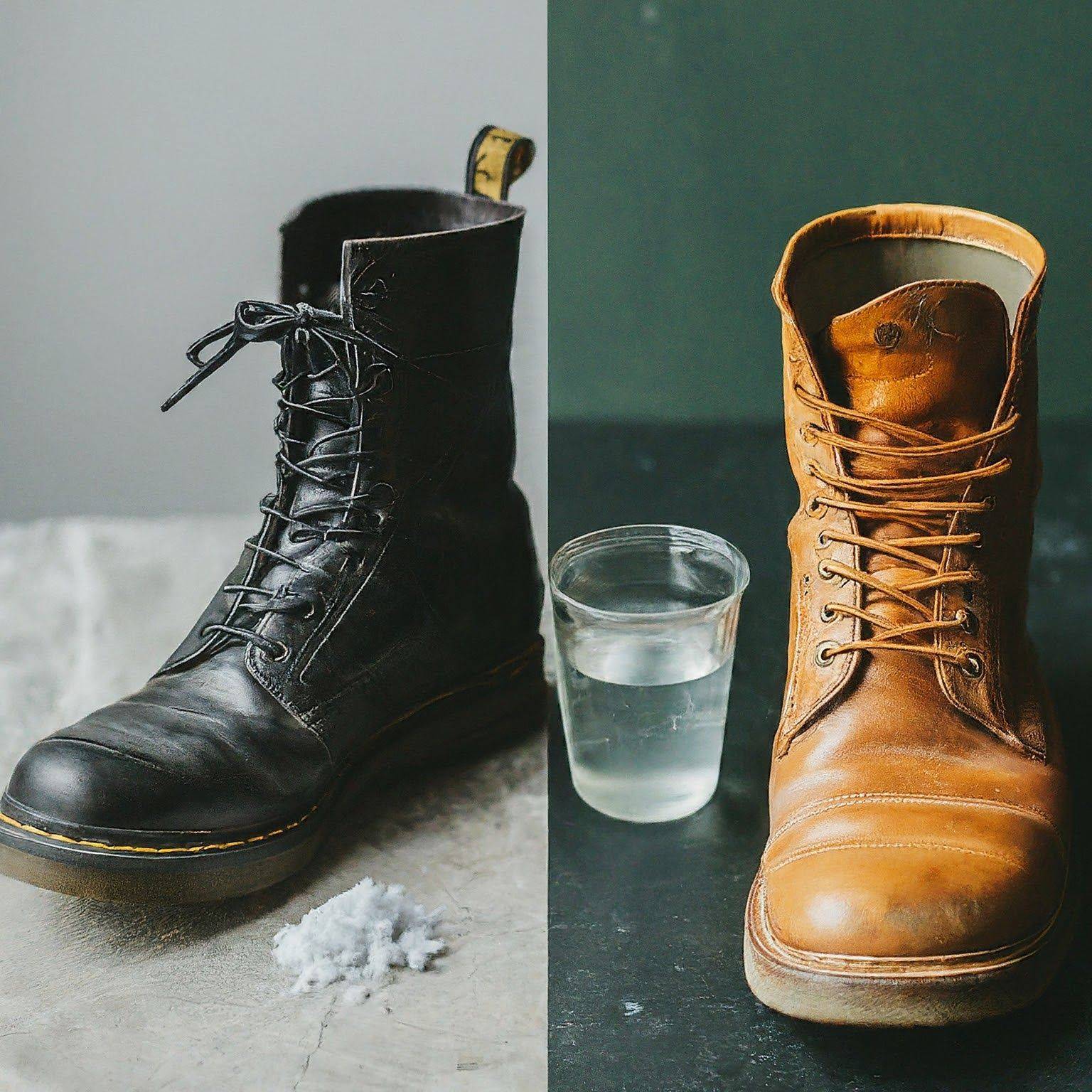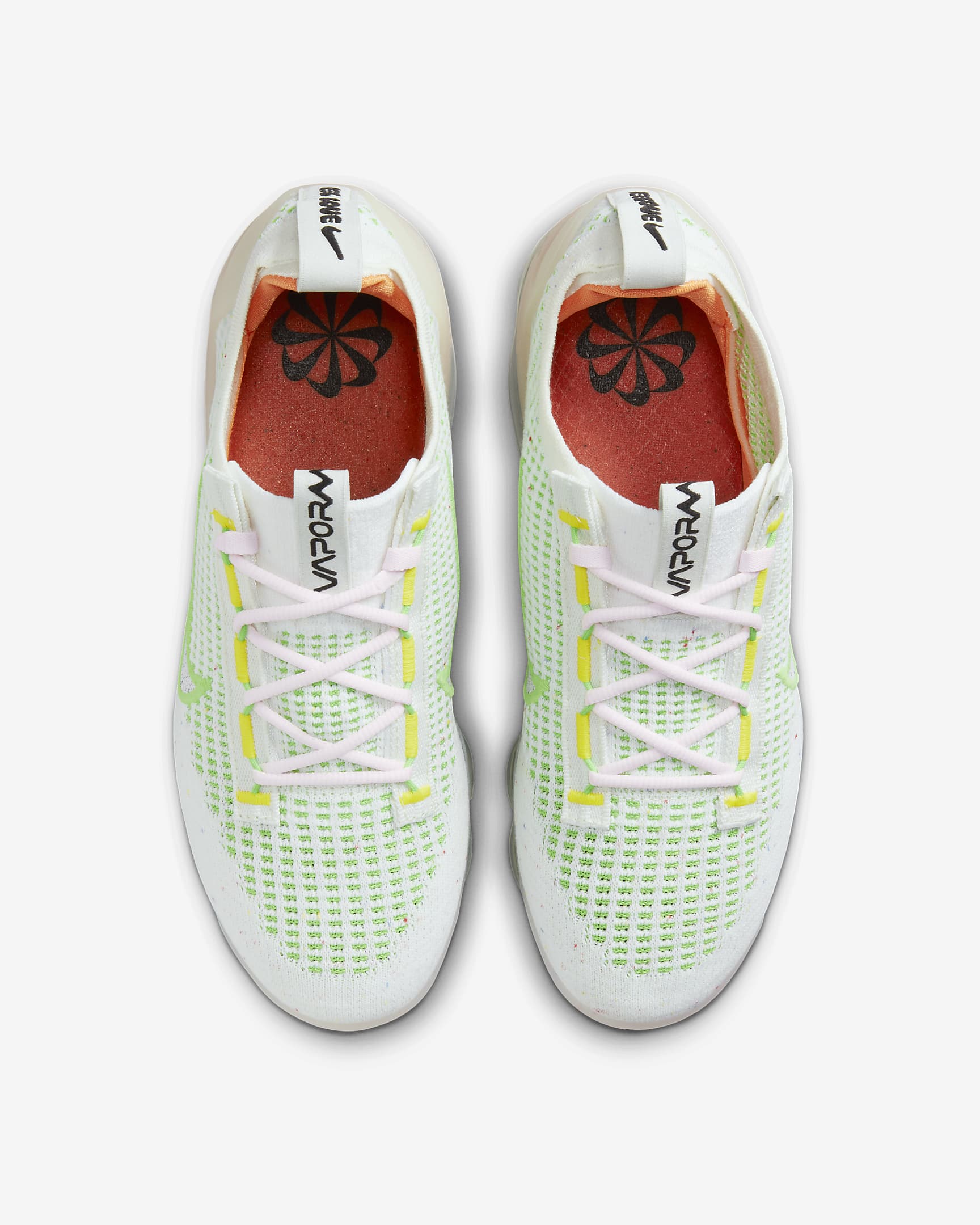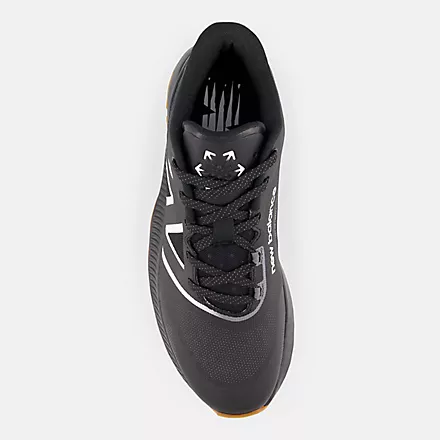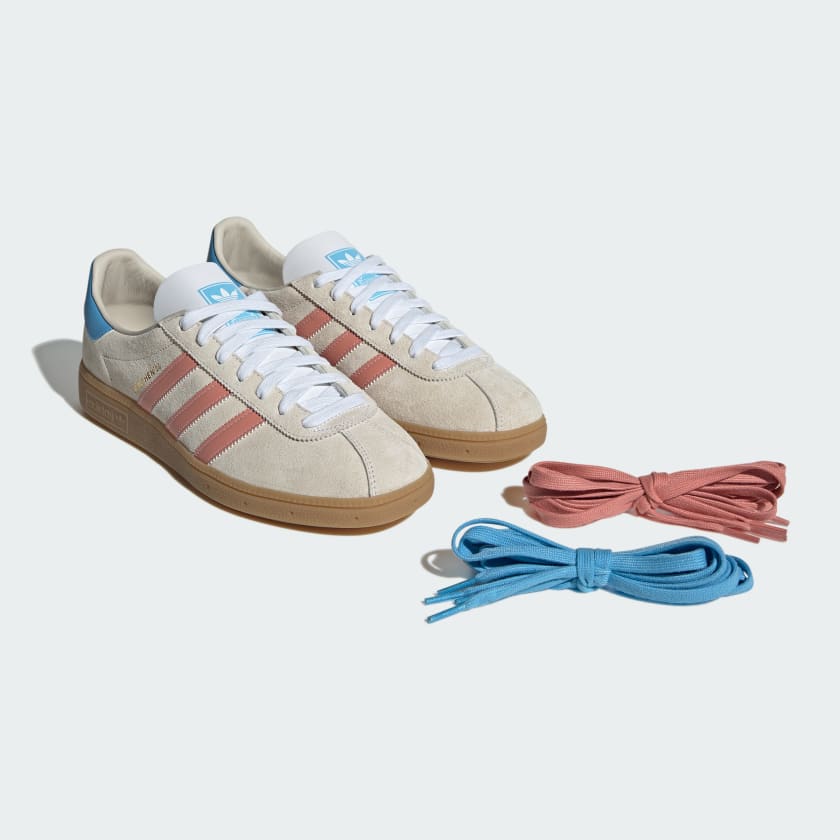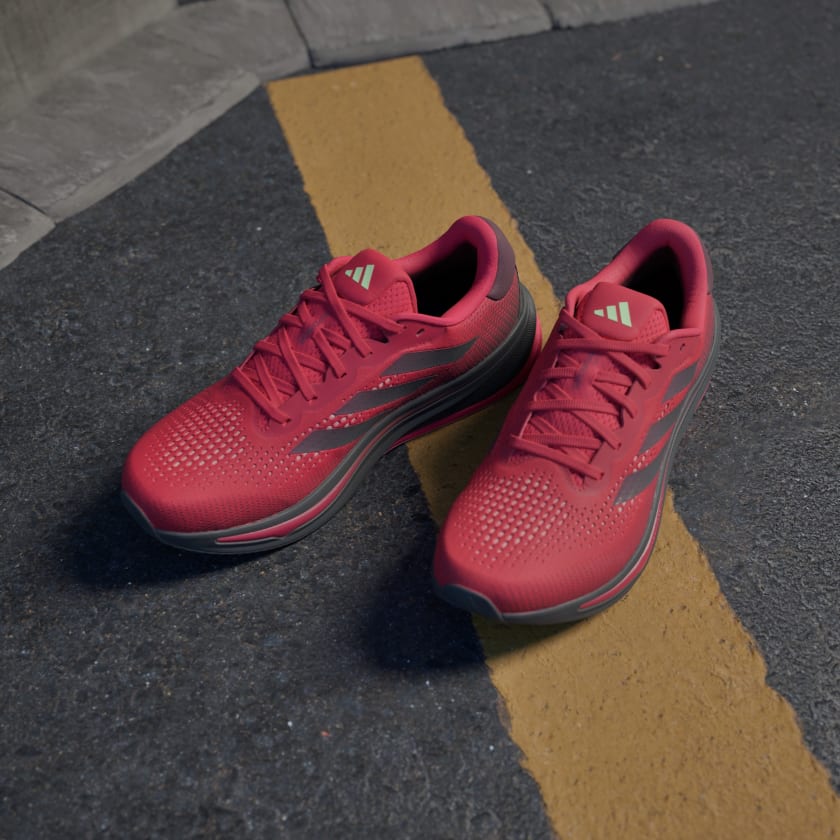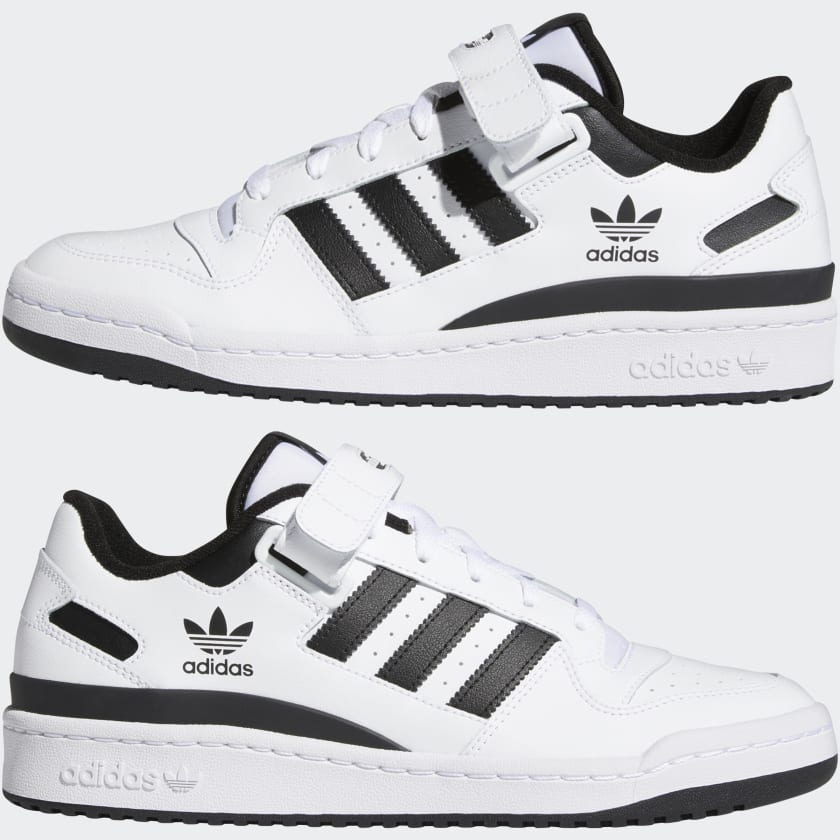Learn how to clean boots without boot cleaner using simple household items. Ditch harsh chemicals! Learn natural ways…
Whether you’ve been hiking through muddy forests, kicking up dust on a construction site, or simply braving the elements during your daily commute, your boots inevitably bear the marks of your adventures. You know that the Shoesguidance website always writes what are people thinking, and what they want to know. We also added a post on How to clean leather boots with household items: Simple, gentle cleaning solutions for sparkling boots.
While specialized boot cleaners offer convenience, you might find yourself without one when the need for a cleanup arises. Fear not! With a few common household items and some elbow grease, you can revitalize your boots and keep them looking their best.
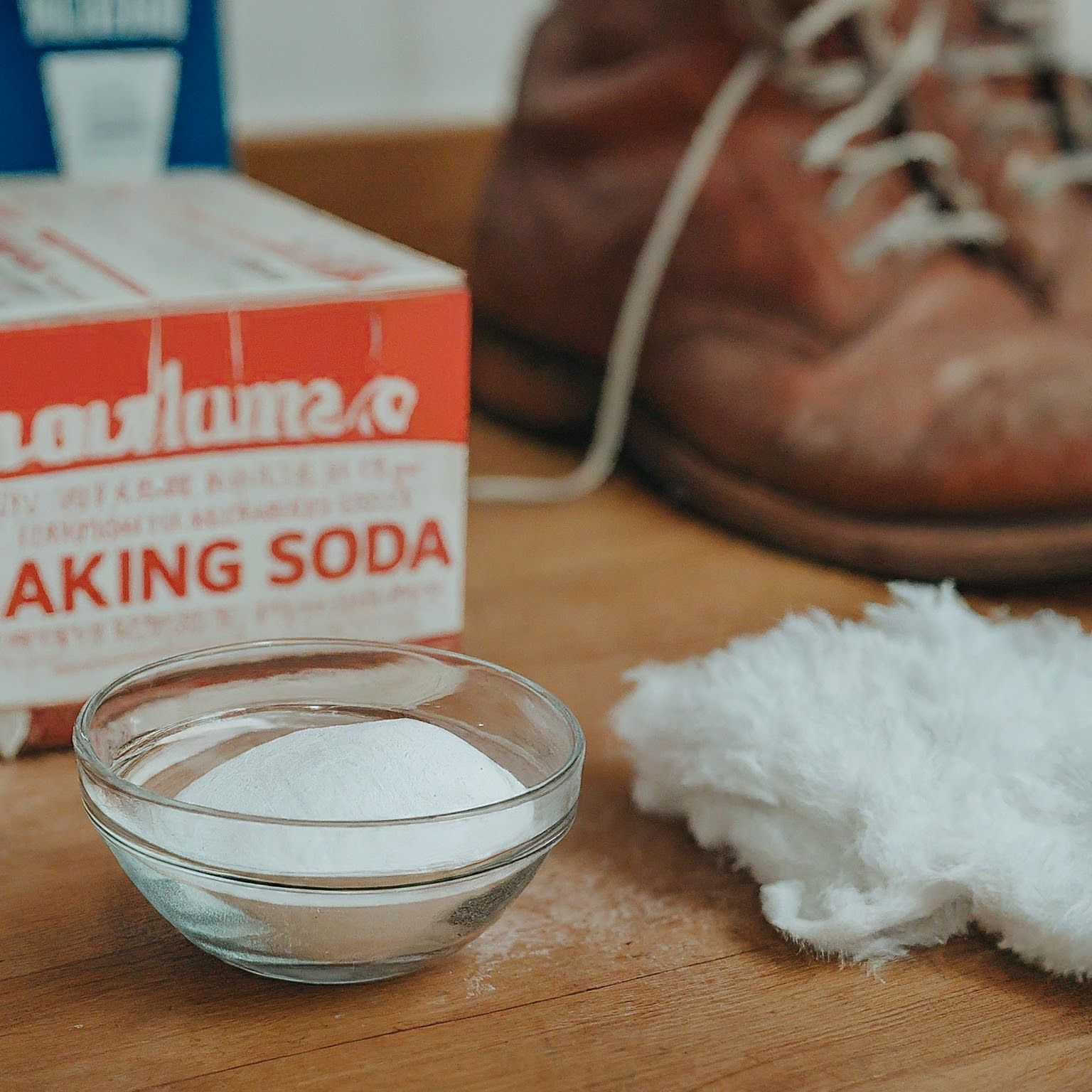
Determining Your Boot Material
The Right Approach for Your Boots
Before diving into cleaning methods, it’s essential to understand the material your boots are made from. This knowledge dictates the safest and most effective cleaning techniques.
- Leather
- Leather boots are prized for their durability and style. However, leather is a natural material that can dry out and crack if subjected to harsh cleaning treatments.
- Suede & Nubuck
- Suede and nubuck boast a soft, velvety texture but are notoriously susceptible to water stains and damage. Extra care is necessary when cleaning.
- Canvas & Fabric
- Boots made from canvas or other fabrics are generally hardier and more forgiving when it comes to cleaning procedures.
Cleaning Solutions You Already Own
Your Cleaning Arsenal
You don’t need to invest in fancy cleaning products to get your boots gleaming. Take a look in your kitchen and bathroom – you likely have the necessary tools at your disposal!
-
Dish Soap
- Mild dish soap is a fantastic all-purpose cleaner. Its grease-cutting abilities and gentle formula make it suitable for various boot materials.
White Vinegar & Water
- White vinegar possesses natural disinfecting attributes and can effectively tackle stains. Dilute it with water to create a cleaning solution. Here’s a handy ratio chart:
| Purpose | Vinegar (Parts) | Water (Parts) |
|---|---|---|
| Light Cleaning | 1 | 2 |
| Tough Stains | 1 | 1 |
-
Baking Soda Paste
- Baking soda is mildly abrasive, making it excellent for scrubbing stubborn scuff marks. It also helps neutralize odors. Mix a small amount of baking soda with water to create a paste-like consistency.
Cleaning Techniques for Each Material
Material-Specific Methods
Now that you’re armed with your DIY cleaning solutions, let’s explore how to use them most effectively for your specific boots:
-
Leather Boots
- Step 1: Preparation
- Remove laces and insoles (if possible) to clean them separately.
- Use a soft brush or a dry cloth to remove loose dirt and debris.
- Step 2: Choose your solution
- For light cleaning and general grime: Opt for a mild dish soap and warm water solution.
- For tougher stains: Use the diluted white vinegar solution.
- Step 3: Gentle Cleaning
- Dampen a soft cloth with your chosen solution.
- Wipe down the boots in a circular motion, avoiding excessive scrubbing.
- Step 4: Rinsing and drying
- Use a clean, damp cloth to wipe away any soapy or vinegar residue.
- Allow the boots to air dry completely in a well-ventilated area. Stuffing them with newspaper will help them maintain their shape and absorb moisture.
- Step 5 (Optional): Conditioning
- Once dry, apply a leather conditioner to restore moisture and suppleness. This helps prevent cracking and extends the lifespan of your boots.
- Step 1: Preparation
Suede and Nubuck Boots
-
- Step 1: Preparation
- As with leather boots, remove laces and insoles.
- Invest in a suede brush for optimal results. It helps lift the nap (the fuzzy surface) of the material.
- Step 2: Dry cleaning
- Use the suede brush to gently remove dirt. Brush consistently in the same direction.
- A suede eraser can tackle minor stains.
- Step 3: Tackling stains
- For stubborn stains, use a tiny amount of white vinegar solution on a soft cloth. Test on a discreet area first, as some materials are more sensitive to discolouration.
- If the boots are heavily soiled, a specialized suede shampoo might be necessary.
- Step 4: Drying
- Air drying is crucial for suede and nubuck boots. Avoid direct sunlight or heat sources.
- Step 1: Preparation
Canvas and Fabric Boots
-
- Step 1: Preparation
- Remove laces and insoles for separate cleaning.
- Brush away loose dirt and debris.
- Step 2: Wash * Create a solution of dish soap and warm water. * Use a soft brush or cloth to scrub the boots with the soapy mixture.
- Step 3: Rinse * Thoroughly rinse with clean water to remove soap residue.
- Step 4: Stubborn Stains
- Pretreat tough stains with a baking soda and water paste. Leave it on for about 15 minutes before scrubbing and rinsing.
- Step 5: Drying
- Allow the boots to air dry. You can stuff them with newspaper for shape retention and faster drying.
- Step 1: Preparation
Additional Tips and Considerations
Pro Tips to Keep in Mind
- Tackling Salt Stains: Those dreaded white salt marks can plague boots during winter. Wipe them away with a mixture of equal parts white vinegar and water.
- Stuffing Works Wonders: The newspaper is your friend! Stuffing damp boots with it speeds up drying, helps maintain their shape and combats odours.
- Avoid Harsh Chemicals: Bleach and other strong cleaning agents can damage various boot materials, causing discolouration and weakening of the fibres. Stick to the gentle methods outlined earlier.
- Protect Against the Elements: After cleaning, consider applying a waterproofing spray suitable for your boot’s material. This provides an extra layer of protection against water and stains.
- Regular Maintenance is Key: Don’t wait until your boots are caked in mud! Regular cleaning with a brush after wear will prevent buildup and make future deep cleaning much simpler.
Conclusion
Sparkling boots shouldn’t require a trip to the specialty store. With a little knowledge and these simple DIY cleaning techniques, you can maintain the appearance of your favorite footwear using items you likely already have at home.
Remember, the most important factor is understanding your boot material and tailoring your cleaning approach accordingly. By following these guidelines, you’ll extend the life of your boots and save yourself the cost of commercial cleaners.
Read More:
- Get Ready to Drool: Cole Haan Men’s Originalgrand Cap Toe Boot Fashion Review Unveiled!
- Unbelievable! Puma Desierto V2 Review Uncovers the Ultimate Cold-Weather Shoe!
- How to Wear Ankle Boots with Straight Leg Jeans:10 Mind-Blowing Ways to Rock Ankle Boots with Straight Leg Jeans!
- How to Wear Ankle Boots Over 40: A Stylish Guide for Fashion-Forward Women
- Clarks Women’s Caroline Park Ankle Boot Review-Is This the Perfect Women’s Boot? Find Out Now!
FAQ’s
Q: How do you clean leather boots without boot cleaner?
A: Cleaning leather boots without specialized products is surprisingly easy! A mixture of mild dish soap and warm water is perfect for general grime. For tougher stains, try a diluted white vinegar solution (test it on a hidden spot first). Wipe gently with a soft cloth, rinse well, and always let your leather boots air dry completely.
Q: Is it okay to clean boots with water?
A: It depends on your boots! Leather boots need minimal water exposure – use a slightly damp cloth, never soak them. Canvas or synthetic boots can handle a little more water, but the safest bet is always a damp cloth followed by air drying.
Q: How do you clean boots with household items?
A: You’ve got an arsenal at home! Dish soap tackles grease, white vinegar fights stains, and baking soda makes a gentle scrub for scuff marks. A soft cloth or old toothbrush and some warm water are all you need to apply these cleaners.
Q: Can I use dish soap to wash my boots?
A: Absolutely! Dish soap is gentle yet effective at cutting through dirt and grease, making it suitable for most boot materials. Just dilute it with warm water and avoid harsh scrubbing.
Q: Is Vaseline good for leather boots?
A: While Vaseline can soften leather temporarily, it’s not ideal. It can clog pores and prevent your leather from breathing, potentially leading to drying and cracking in the long run. Stick to specialized leather conditioners for the best results.
Q: Can I use shampoo to clean leather boots?
A: Not! Shampoo is formulated for hair and skin, with a different pH balance than leather. It can strip away natural oils, leaving your leather boots dried out and vulnerable to damage.
Q: What is the best method to clean boots?
A: The best method always depends on what your boots are made of!
- Leather: Gentle cleaning with a damp cloth using dish soap or vinegar, followed by air drying.
- Suede/Nubuck: Dry brushing and specialized suede products.
- Canvas/Synthetics: More tolerant of soapy water washes and scrubbing.
Q: Does water destroy leather boots?
A: Soaking or harsh scrubbing with water can damage your leather boots. Prolonged water exposure can cause the leather to stiffen, crack, and even lead to mold issues. Always stick to a damp (not wet) cloth and air drying when cleaning leather boots.
